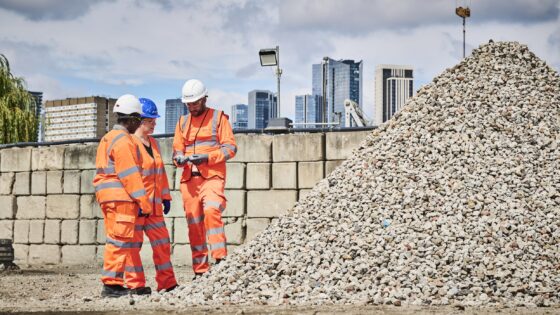The carbon footprint of the global construction industry is projected to double by 2050, hindering any notion reaching net zero, a new peer-reviewed study has revealed.
Published in Nature, the study’s analysis shows that even if emissions from all other industries were reduced to zero, the construction carbon footprint alone would be enough to use up all remaining carbon budgets for 1.5°C of warming by 2050.
The report’s authors stated: “Our findings indicate that the global construction carbon footprint has doubled over the past three decades and is projected to more than double by 2050.
“In 2022, over half of the construction industry’s carbon emissions stemmed from cementitious materials, bricks, and metals, while glass, plastics, chemicals, and bio-based materials contributed 6%, and the remaining 37% arose from transport, services, machinery and on-site activities.
“Under the business-as-usual scenario, the construction carbon footprint alone will exceed the per-annum carbon budget for the 1.5 °C and 2 °C goals in the next two decades.”
The report also discusses how the construction industry is widely regarded as one of the most difficult industries to decarbonise. It accounts for approximately 40Gt of sand and gravel extraction and more than 20% of freshwater consumption yearly across the globe, “creating additional pressure to transform the industry into an environmentally friendly one”, according to the report.
As the authors point out, the tension for the construction industry “lies in how to align the carbon cost of the global built environment with global climate commitments while at the same time providing the essential infrastructure for a growing population”.
With this being said, the authors are calling for a global “material revolution”, suggesting a shift to bio-based, circular and reused materials.
The analysis found that of the 12.2Gt of CO₂ emitted in 2022 from the construction industry, cement, clinker, bricks and clay made up 40% of the total, while metals accounted for 15%.
“The relative share of these materials in the construction sector’s carbon footprint has increased by ~50% over the past three decades. This indicates deep structural inertia, with current growth trajectories showing no sign of deceleration,” the study states.
“Given this inertia, the available carbon budget to remain within the 1.5 °C threshold has not yet been exceeded. However, our findings suggest that the construction sector alone could soon render this climate goal unattainable.”
These materials together have become more carbon-intensive over time where their combined share of construction emissions rose from 39% to 57% since 1995, the report continues.
“We advocate for a material revolution, such as replacing traditional materials with biobased materials, which leverages economies of scale and paves the way for a transformative and sustainable future in construction,” the authors said.
With this recommendation in mind, Exergio, a company that develops artificial intelligence (AI)-based tools for energy efficiency in commercial buildings, chief executive Donatas Karčiauskas has warned that even buildings made from carbon-neutral materials keep wasting energy after they start operating.
“When buildings become operational, energy waste happens quietly, we see that heating and cooling systems start working against each other, sensors give inaccurate readings and rooms stay heated or cooled long after people leave,” he said.
“The same inefficiency that starts in material production continues in operation. It just changes form.”
Karčiauskas further stated how the focus on carbon-neutral materials overlooks an easier and more cost-effective solution of optimising the systems that govern the construction industry.
“Switching the world’s building stock to new materials will take decades and cost trillions and even then, buildings would still waste 40% of global energy,” he said.
“We already have a faster fix. Optimising how systems run can cut up to 30% of that waste now, without rebuilding anything.
“Both embodied and operational emissions are growing.
“We see the highest potential for cutting waste not in new projects but in existing buildings, especially across Asia, where demand and energy intensity are soaring. Optimising those systems could cut emissions immediately, without producing another wave of materials.”
The study further claims that Asia now produces over 70% of construction-related CO₂ in which China emits about 6Gt and India just over 1Gt but together more than the rest of the world combined.
North America and Europe build less but still rely on concrete and steel, according to the authors, whereas Africa and the Middle East are expanding at an increased rate each year as their cities grow. The study concludes that emerging regions must use fewer materials in order to decarbonise while developed ones need to make existing buildings run smarter.
Like what you’ve read? To receive New Civil Engineer’s daily and weekly newsletters click here.
link






More Stories
Construction industry
Industry Perspectives Op-Ed: Building Canada’s future
Managing Construction Risk in 2025: What Industry Leaders Need to Know | Procopio, Cory, Hargreaves & Savitch LLP